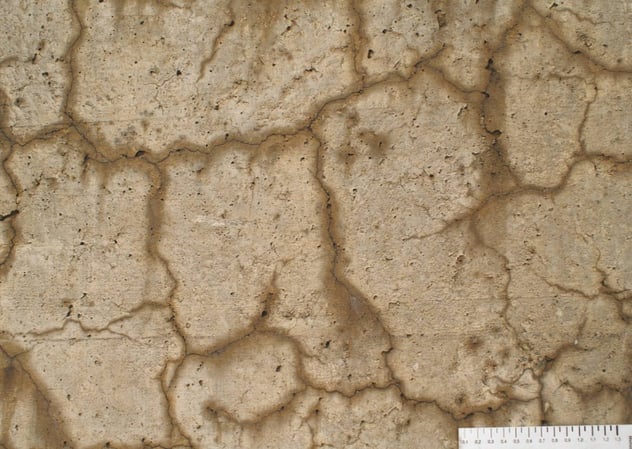
It’s every engineer’s worst nightmare: Concrete Disease. Otherwise known as “concrete cancer,” the formation of dark, veiny cracks in a concrete structure over time are actually a result of the alkali-aggregate reaction.
A Major Discovery Related to Concrete Disease
Although scientists have known about alkali-aggregate reactions (AAR) for decades, the molecular-level details have remained fuzzy. What has been known is that AAR cracks are caused by moisture and substances within the concrete seeping to the surface over time. In the last few years, researchers at the Paul Scherrer Institute have devoted themselves to understanding the atomic structure of these reactions and preventing them once and for all.
By studying the degradation of concrete structures like dams and retaining walls over time, scientists at PSI used measurements and light to fully identify the structural changes that occur during AAR. We now know that the substance behind Concrete Disease aligns as a crystal, arranging itself very regularly, which takes up more space than the concrete itself. Observed during these studies were so-called sheet-silicate structures which had never been seen before in history.
What Can Be Done About AAR?
Concrete Disease is, at its core, a chemical reaction. Concrete is made up mostly of cement which itself contains several alkali metals. Any moisture that’s able to penetrate the concrete reacts with these metals causing AAR. The sand and gravel silicates contained in cement then react with these alkaline liquids, expanding and leading to cracks.
By knowing exactly how the molecules are arranged once this reaction takes place, scientists can now work on a solution. They’ve hypothesized that adding an organic substance to the concrete, they may be able to reduce the buildup of tension between the concrete and the crystals themselves, preventing cracks. Most importantly, knowing the chemical structure behind Concrete Disease will allow researchers to study precisely how well proposed solutions work (or don’t work) to correct the problem. It’s a huge step towards creating a more durable, long-lasting concrete material.
Shield Engineering is an expert in concrete and cement structures. Our experienced team works on projects ranging from brides to buildings to tunnels; how can their extensive knowledge help your plans succeed? Call us today to find out more.


